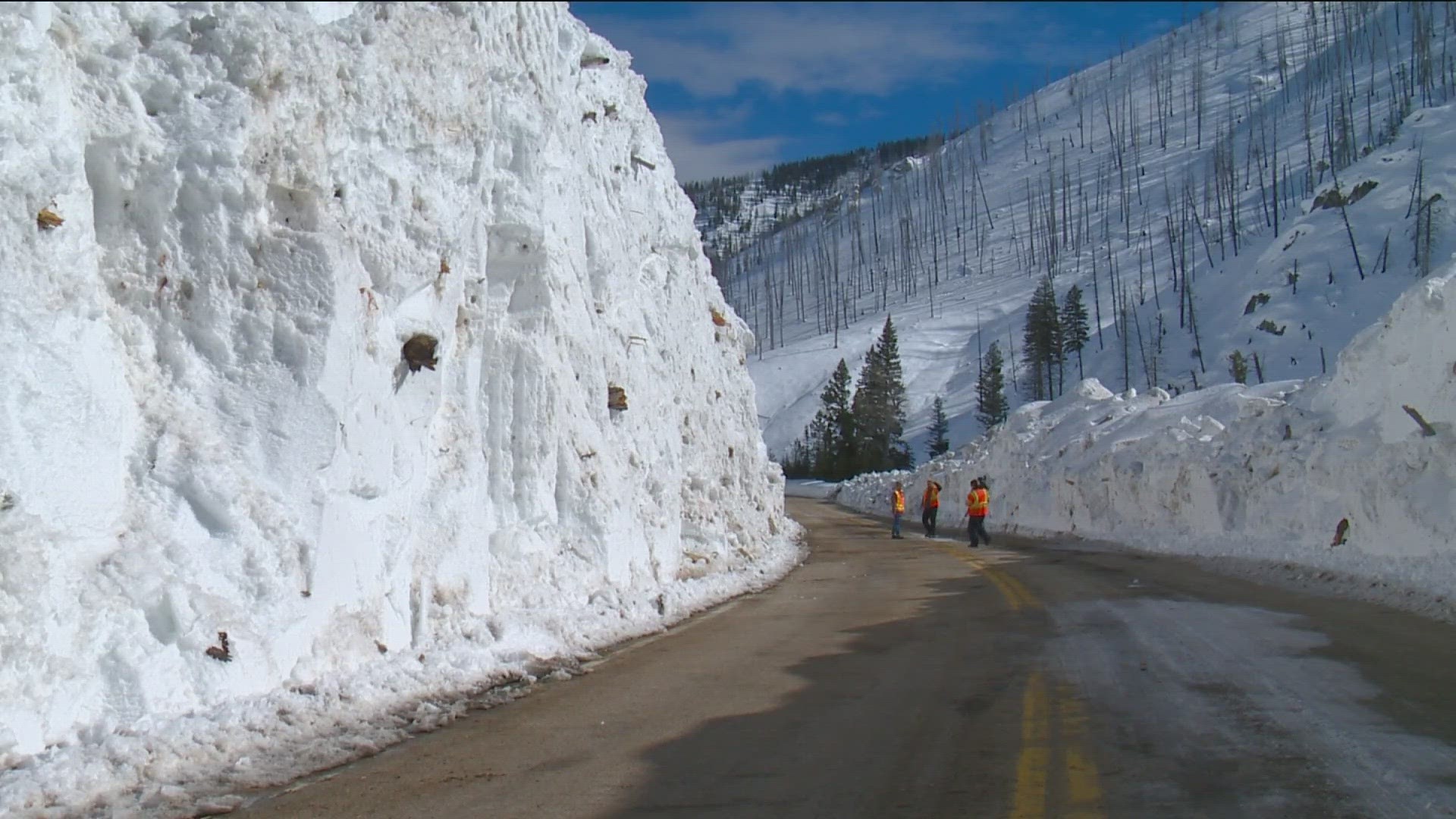BOISE, Idaho — Closures on the 11-mile stretch of State Highway in from Grandjean to Banner Summit in Boise County during the winter are about as common as snow on the mountains.
But a team from the Idaho Transportation Department(ITD) has been working year after year to keep that stretch of the highway, often called "Avalanche Alley," open for longer.
Every winter, ITD's avalanche team monitors snowpack conditions to decide when to close that section of the highway when necessary for safety.
State Highway 21 is one of just three highways in the country that fall under the "High" category on the Avalanche Hazard Index, in addition to SH-210 in Utah and U.S. Highway 550 in Colorado.
The 11-mile stretch of highway is dotted with about 70 avalanche paths, which have posed problems for drivers during the winter. ITD avalanche team leader Bill Nicholson said they've seen snow piles as high as 80 feet deep on the road.
"There were various attempts to reduce closure times, and then I think ITD got very serious about it when they brought all of us in in 2008," Nicholson said.
ITD's avalanche team is stationed in Lowman throughout the winter to monitor conditions and safety of the snowpack on the steep slopes above the highway.
"We evaluate the strength of the snowpack on the ground, which changes constantly through the winter," Nicholson said. "We come up with an idea of how much stress that snowpack can handle. Then we look and see when those stresses are going to become too much to have the highway safely open."
The four-person team gets data from specialized weather reports and weather stations and spends time on skis to look for instabilities throughout the canyon.
They also test the snowpack strength with explosives, including an 'Avalauncher,' that fires a two-pound projectile into the snow with compressed nitrogen.
"[Avalaunchers] can only reach to certain elevations," Nicholson said. "So we have these two paths that are real frequent producers that we can't reach with the Avalauncher."
Those two avalanche slide paths - called Sneaky and Six Shooter - are monitored with Remote Avalanche Control Systems (RACS), also called "exploders."
The avalanche team flies two exploders by helicopter every year to a spot near the summit where they are mounted for the winter. The avalanche team fires the exploders remotely with a laptop, which creates an explosion equivalent to a 15-pound airblast.
"It combines hydrogen and oxygen, and then basically a sparkplug just like in your car - detonates it, and that's a huge airblast above the snowpack," Nicholson said. "So it tests these really big slide paths."
The avalanche team's monitoring of SH-21 has led to drivers being able to use the highway more often than in the past when the road could be closed for months at a time during winter.
"Our average now is 15 days [of closure] a year," Nicholson said. "Before we were here, the averages were l45 or 50 days a year of closure time."
ITD's avalanche team will be stationed in Lowman to monitor highway and road conditions until the spring. The team also monitors U.S. Highway 12 near the Montana border.
During the winter, parking is not allowed inside the 11-mile stretch of SH-21 from Grandjean to Banner Summit. ITD said that due to the severity of avalanches, crews sometimes have to act fast to close that section of the highway.
Watch more Local News:
See the latest news from around the Treasure Valley and the Gem State in our YouTube playlist:
HERE ARE MORE WAYS TO GET NEWS FROM KTVB:
Download the KTVB News Mobile App
Apple iOS: Click here to download
Google Play: Click here to download
Watch news reports for FREE on YouTube: KTVB YouTube channel
Stream Live for FREE on ROKU: Add the channel from the ROKU store or by searching 'KTVB'.
Stream Live for FREE on FIRE TV: Search ‘KTVB’ and click ‘Get’ to download.

